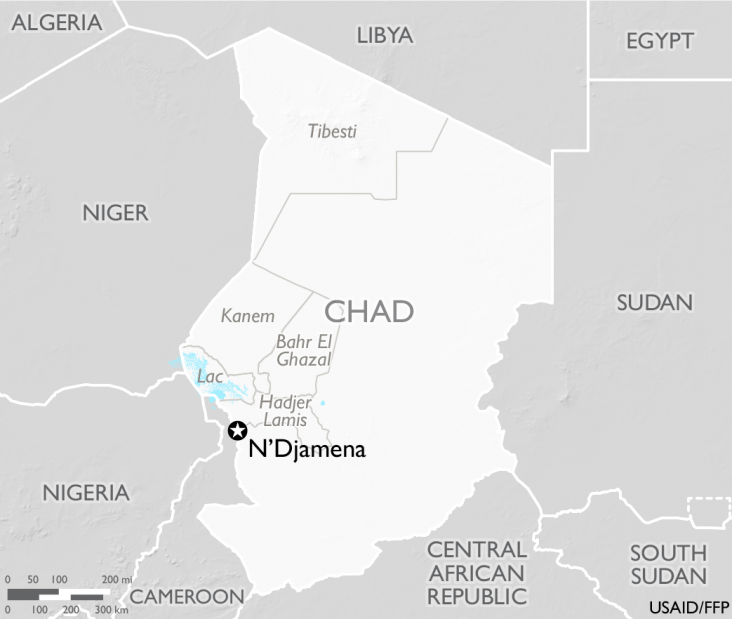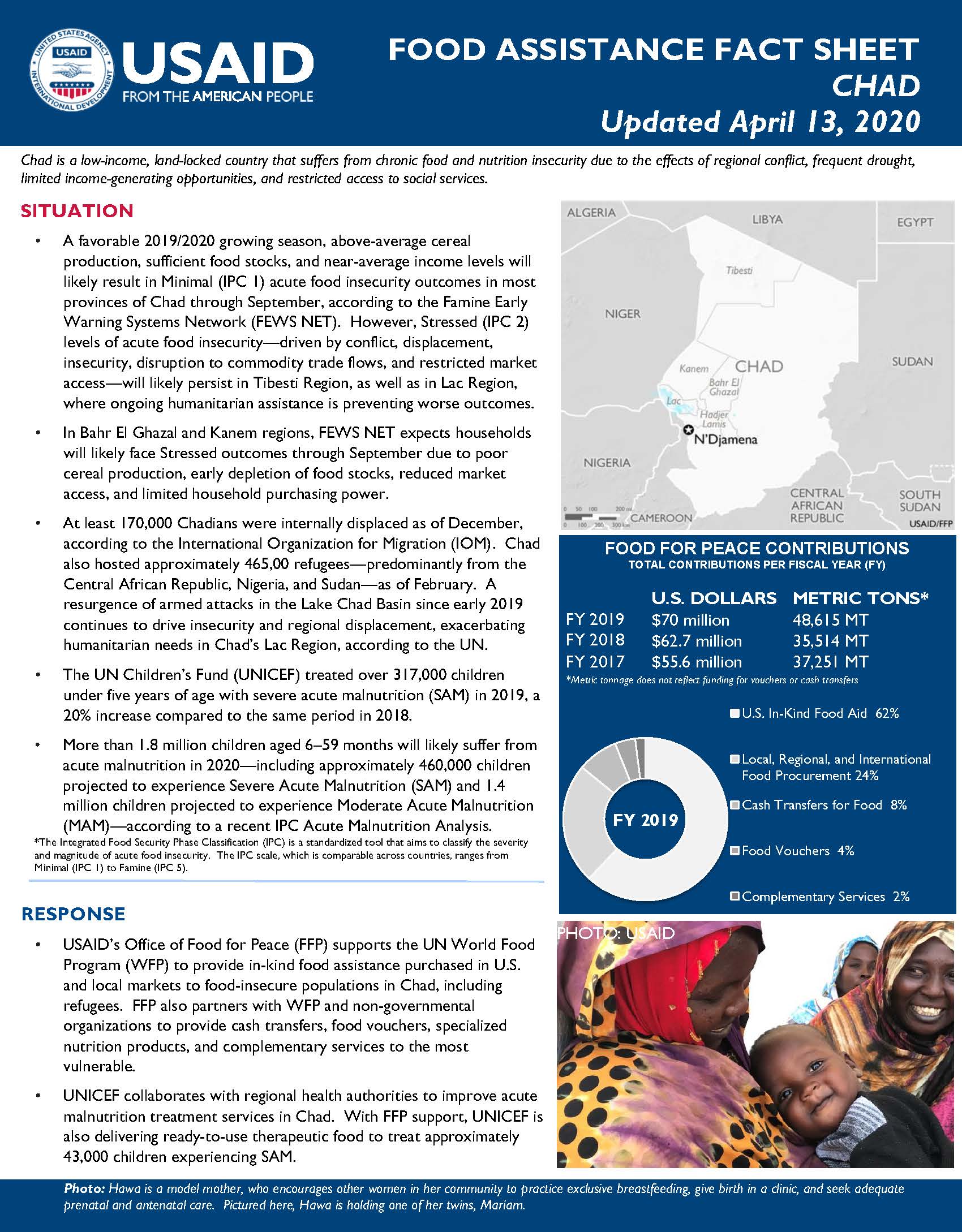Home » What We Do » Agriculture and Food Security » Food Assistance » Where We Work » Food Assistance Fact Sheet - Chad
- What We Do
- Agriculture and Food Security
- Democracy, Human Rights and Governance
- Economic Growth and Trade
- Education
- Environment and Global Climate Change
- Gender Equality and Women's Empowerment
- Global Health
- Humanitarian Assistance
- Transformation at USAID
- Water and Sanitation
- Working in Crises and Conflict
- U.S. Global Development Lab
Speeches Shim

April 13, 2020
Chad is a low-income, land-locked country that suffers from chronic food and nutrition insecurity due to the effects of regional conflict, frequent drought, limited income-generating opportunities, and restricted access to social services.
Situation
- A favorable 2019/2020 growing season, above-average cereal production, sufficient food stocks, and near-average income levels will likely result in Minimal (IPC 1) acute food insecurity outcomes in most provinces of Chad through September, according to the Famine Early Warning Systems Network (FEWS NET). However, Stressed (IPC 2) levels of acute food insecurity—driven by conflict, displacement, insecurity, disruption to commodity trade flows, and restricted market access—will likely persist in Tibesti Region, as well as in Lac Region, where ongoing humanitarian assistance is preventing worse outcomes.
- In Bahr El Ghazal and Kanem regions, FEWS NET expects households will likely face Stressed outcomes through September due to poor cereal production, early depletion of food stocks, reduced market access, and limited household purchasing power.
- At least 170,000 Chadians were internally displaced as of December, according to the International Organization for Migration (IOM). Chad also hosted approximately 465,00 refugees—predominantly from the Central African Republic, Nigeria, and Sudan—as of February. A resurgence of armed attacks in the Lake Chad Basin since early 2019 continues to drive insecurity and regional displacement, exacerbating humanitarian needs in Chad’s Lac Region, according to the UN.
- The UN Children’s Fund (UNICEF) treated over 317,000 children under five years of age with severe acute malnutrition (SAM) in 2019, a 20% increase compared to the same period in 2018.
- More than 1.8 million children aged 6–59 months will likely suffer from acute malnutrition in 2020—including approximately 460,000 children projected to experience Severe Acute Malnutrition (SAM) and 1.4 million children projected to experience Moderate Acute Malnutrition (MAM)—according to a recent IPC Acute Malnutrition Analysis.
*The Integrated Food Security Phase Classification (IPC) is a standardized tool that aims to classify the severity and magnitude of acute food insecurity. The IPC scale, comparable across countries, ranges from Minimal (IPC I) to Famine (IPC 5).
Food Assistance Fact Sheet - Chad ![]() (pdf - 202k)
(pdf - 202k)
Response
- USAID’s Office of Food for Peace (FFP) supports the UN World Food Program (WFP) to provide in-kind food assistance purchased in U.S. and local markets to food-insecure populations in Chad, including refugees. FFP also partners with WFP and non-governmental organizations to provide cash transfers, food vouchers, specialized nutrition products, and complementary services to the most vulnerable.
- UNICEF collaborates with regional health authorities to improve acute malnutrition treatment services in Chad. With FFP support, UNICEF is also delivering ready-to-use therapeutic food to treat approximately 43,000 children experiencing SAM.
Food for Peace Contributions
Total Contributions:
| U.S. Dollars | Metric Tons | |
|---|---|---|
| Fiscal Year 2019 | $70 million | 48,615 MT |
| Fiscal Year 2018 | $62.7 million | 35,514 MT |
| Fiscal Year 2017 | $55.6 million | 37,251 MT |
* Metric tonnage does not reflect funding for vouchers or cash transfers.


Comment
Make a general inquiry or suggest an improvement.